Stroll in the footsteps of Thomas Becket,
discover the Buffs and where Royals restThe incredibly historical building of Canterbury Cathedral has been welcoming worshippers for over 1,400 years. St Augustine, the first Archbishop of Canterbury, arrived from Rome in 597AD, upon the orders of Pope Gregory the Great.
Canterbury Cathedral has evolved through the centuries fighting off conflict, knights, and forces of nature. The 105th successor of St Augustine and the current head of the Church of England is The Most Revd Justin Welby.
The magnificent Canterbury Cathedral, St Augustine's Abbey, and St Martin's Church were designated by UNESCO in 1988.

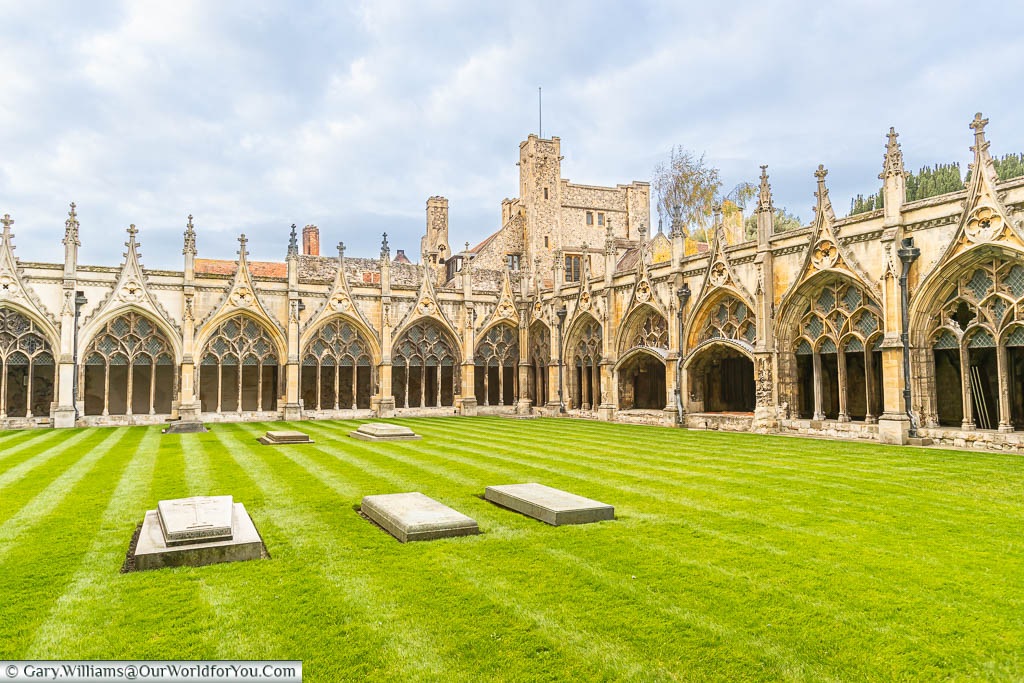
A little more history on Canterbury Cathedral
Its ancient tales of intrigueWorship at Canterbury Cathedral continued to grow and, during the 10th-century, became a community to Benedictine Monks.
The Benedictine monks in Canterbury, like so many other communities around the UK, including the Aylesford Friars nearby us, were evicted due to King Henry VIII's, Dissolution of the Monasteries between 1536 and 1541.
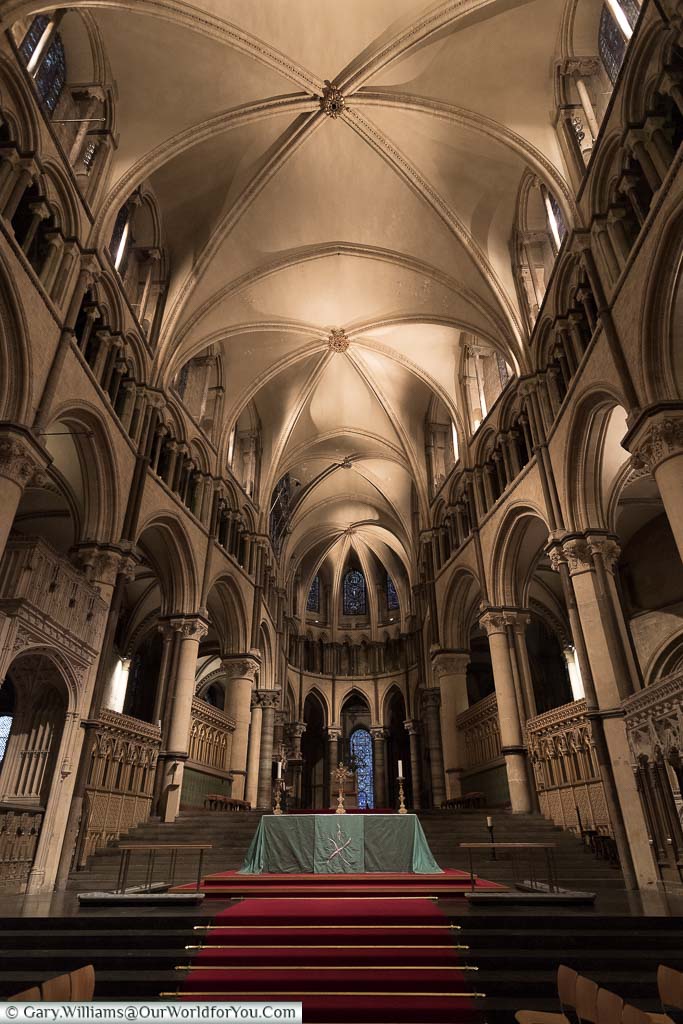
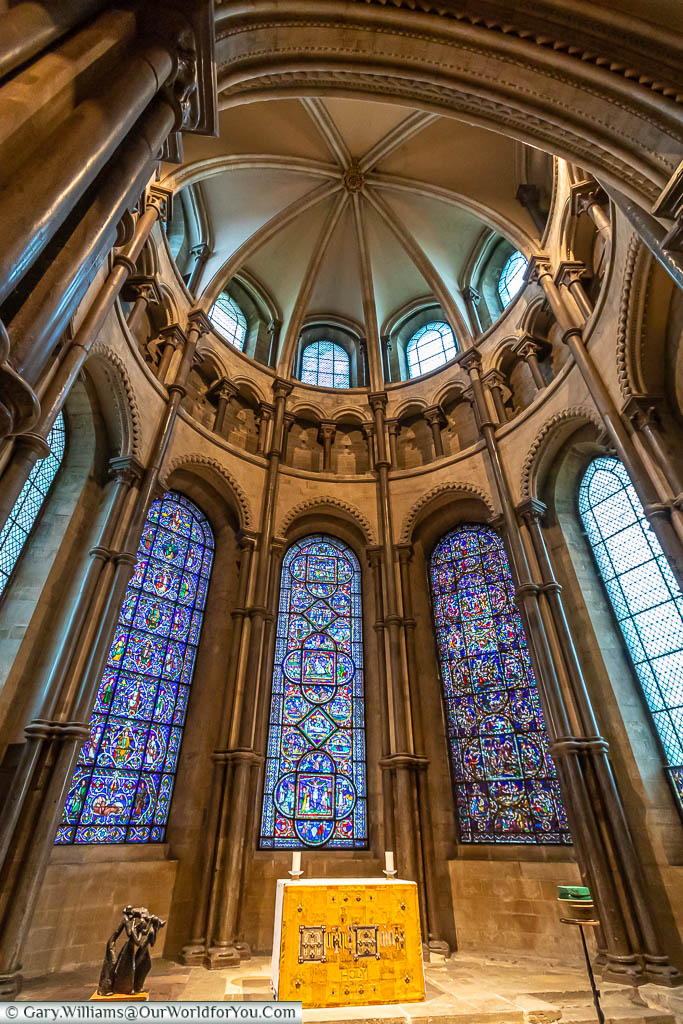
In 1067 Canterbury Cathedral was destroyed by fire and was entirely rebuilt by the first Norman Archbishop of Canterbury between 1070 and 1077.
However, it was the murder of the Archbishop of Canterbury, Thomas Becket, that Canterbury Cathedral is often so synonymous for.
Thousands of pilgrims to this day visit and reflect at the spot where Thomas Becket was slain by four of King Henry II's Knights in 1170. This meaningful area within Canterbury Cathedral’s walls is known as The Martyrdom.
2020 marked a significant anniversary for Thomas Becket as it was 850 years since his horrific murder on 29th December 1170.
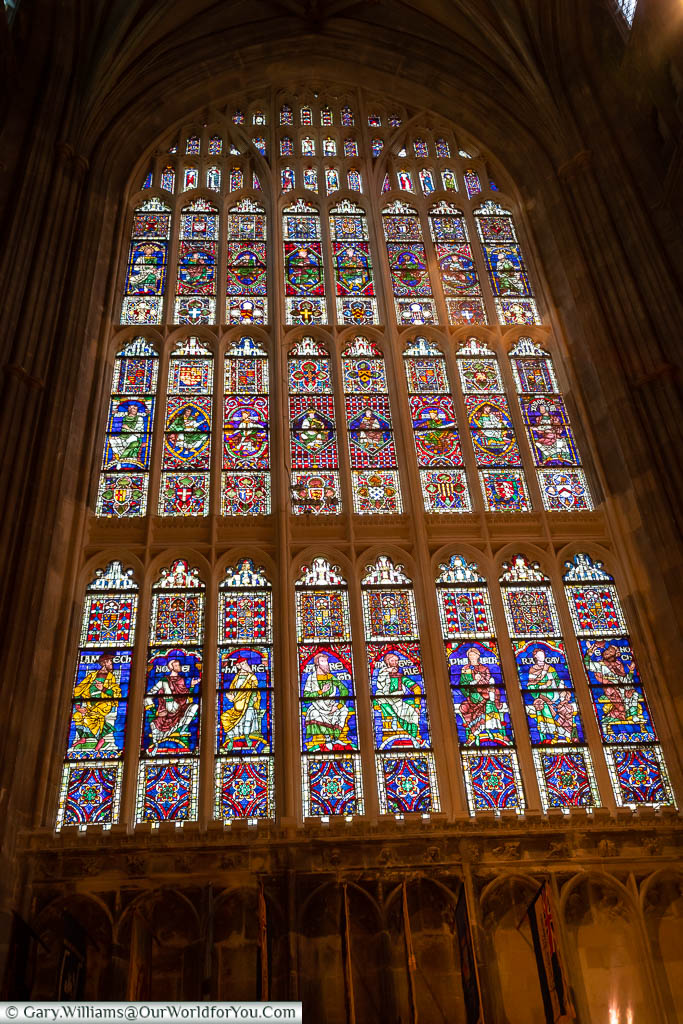
Christ Church Gate, entrance to Canterbury Cathedral
Discovering the ButtermarketWhen visiting Canterbury Cathedral, you must head to The Buttermarket first, just by the Christchurch Gate entrance to the Cathedral.
This charming square is surrounded by historic timber-framed buildings and quaint shops. The centrepiece now of the Buttermarket is Canterbury’s touching war memorial
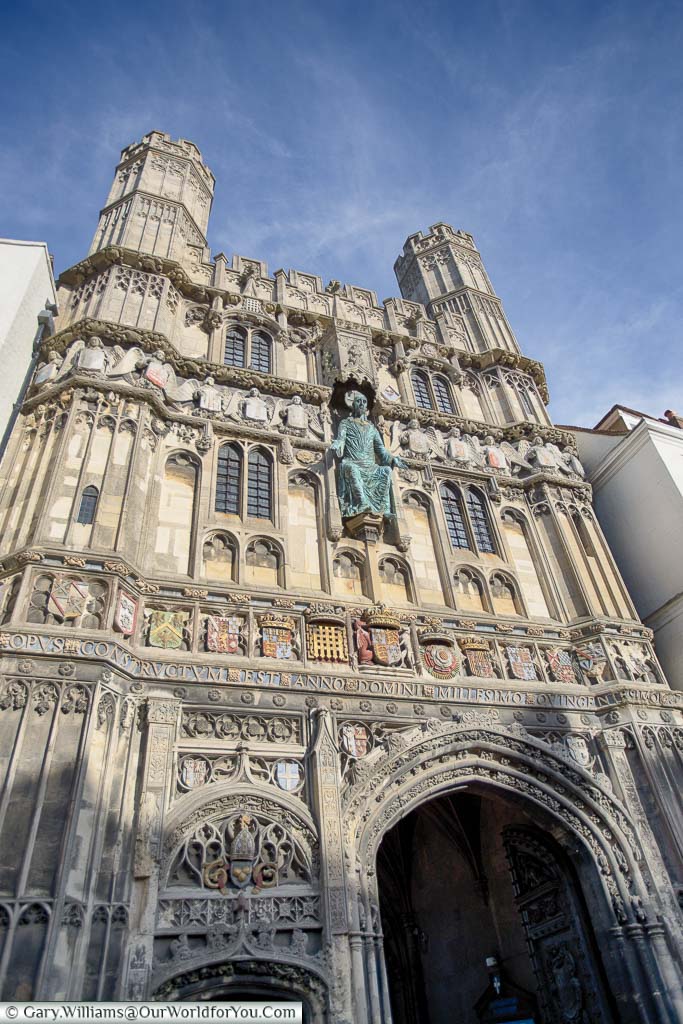
Although this delightful square looks welcoming today, 200 years ago, Buttermarket was named 'Bull Stake', which witnessed many gruesome events.
The original Christchurch Gate was built in the early 16th-century and has evolved through various iterations. During which the beautiful intricate towers have been replaced, the gates restored, and the stonework repaired.
Unbelievably the statute of Christ was replaced in 1990 after an astonishing gap of 347 years.
Escape for a few days
Are you looking for that ‘perfick’ holiday hideaway to relax in while you discover the Garden of England?
After a day exploring the Kent coast and its many historic castles enjoy one of the handpicked properties and unique retreats at Holiday Cottages.
Thomas Becket, the Archbishop of Canterbury
Murdered by the King's Knights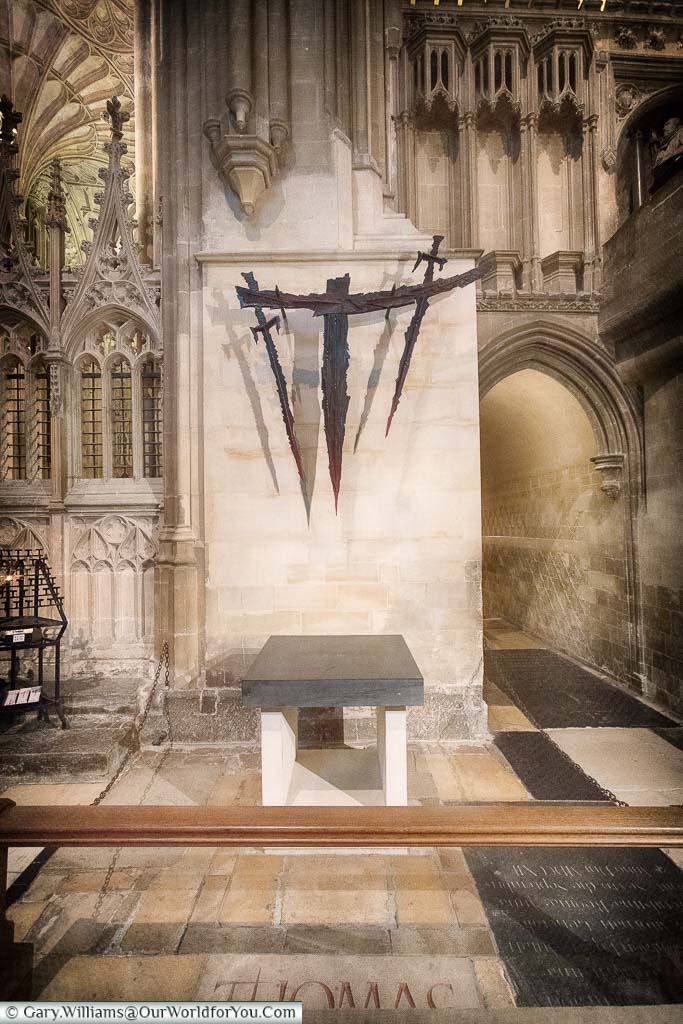
The archbishop had ongoing disputes with King Henry II, the King is believed to have exclaimed, ‘Who will rid me of this low born priest? On hearing this, four of the Kings Knights ventured to Canterbury and murdered Thomas Becket.
The site of the murder is marked by a poignant sculpture in The Martyrdom.
The shrine of St Thomas was destroyed in 1538 on the orders of King Henry VIII. Today a single lit candle sits at the spot where the shrine once stood in Trinity Chapel.
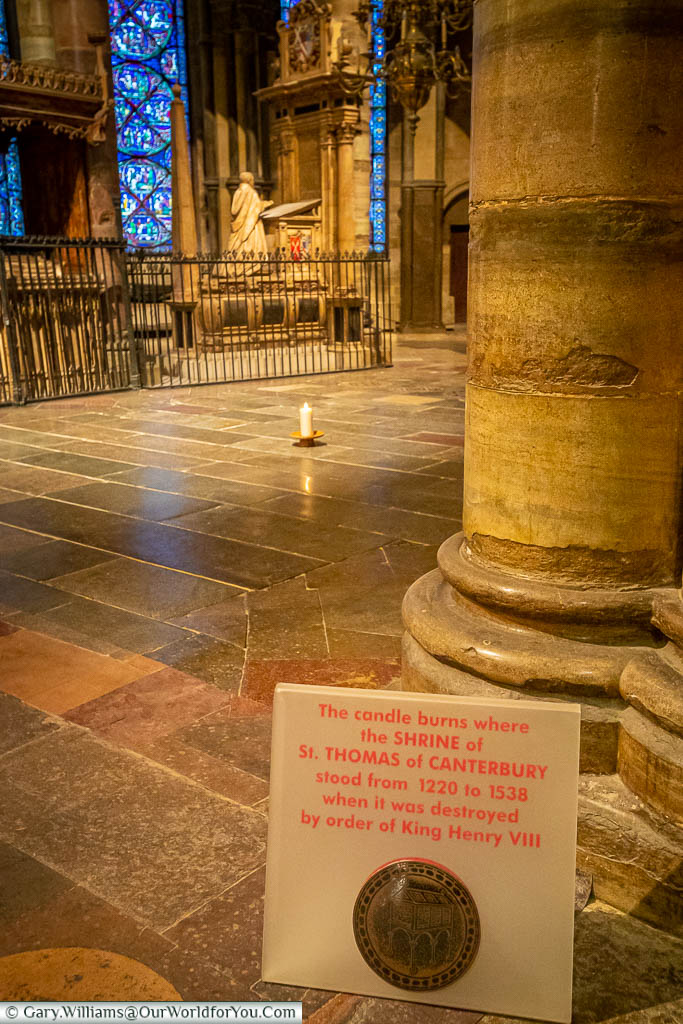
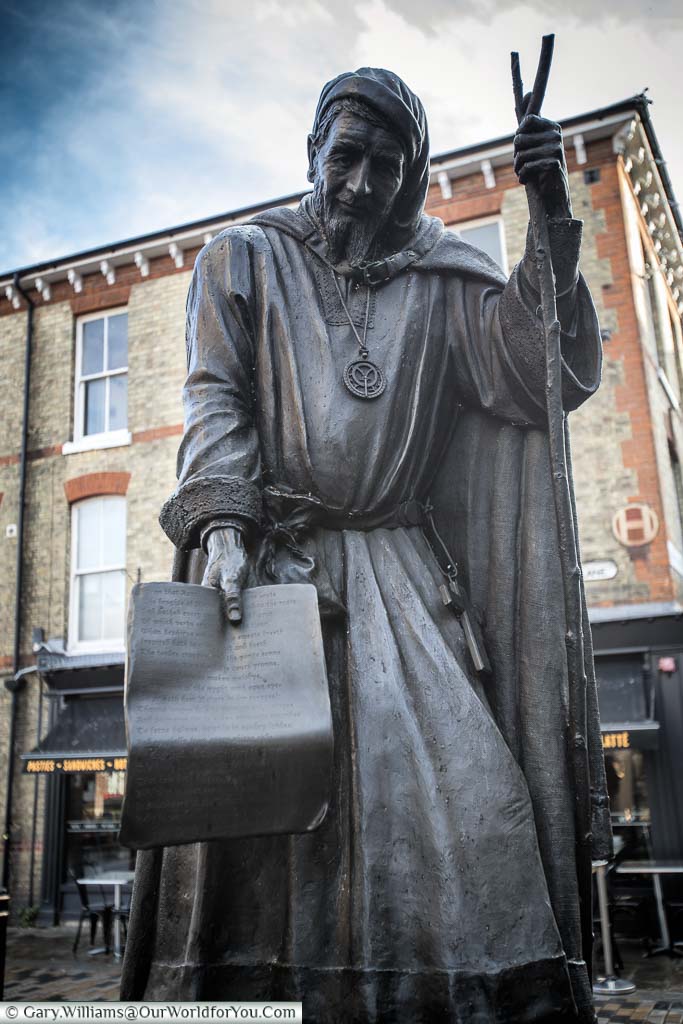
Kent coastal road trip
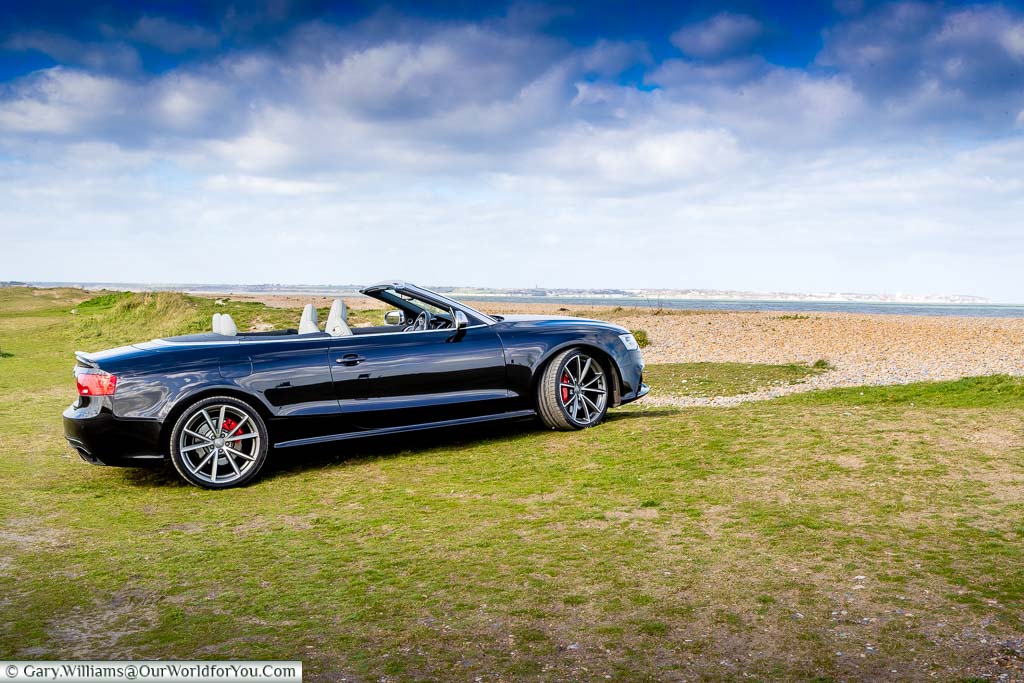
A scenic coastal road trip around the shores of Kent, UK
Edward the Black Prince
Never to be KingAnother of the significant tombs within Canterbury Cathedral is that of Edward of Woodstock, also known as the “Black Prince”.
Edward of Woodstock was the eldest son of King Edward III. He was one of England’s most successful commanders, known by his contemporaries as one of the greatest knights of his age.
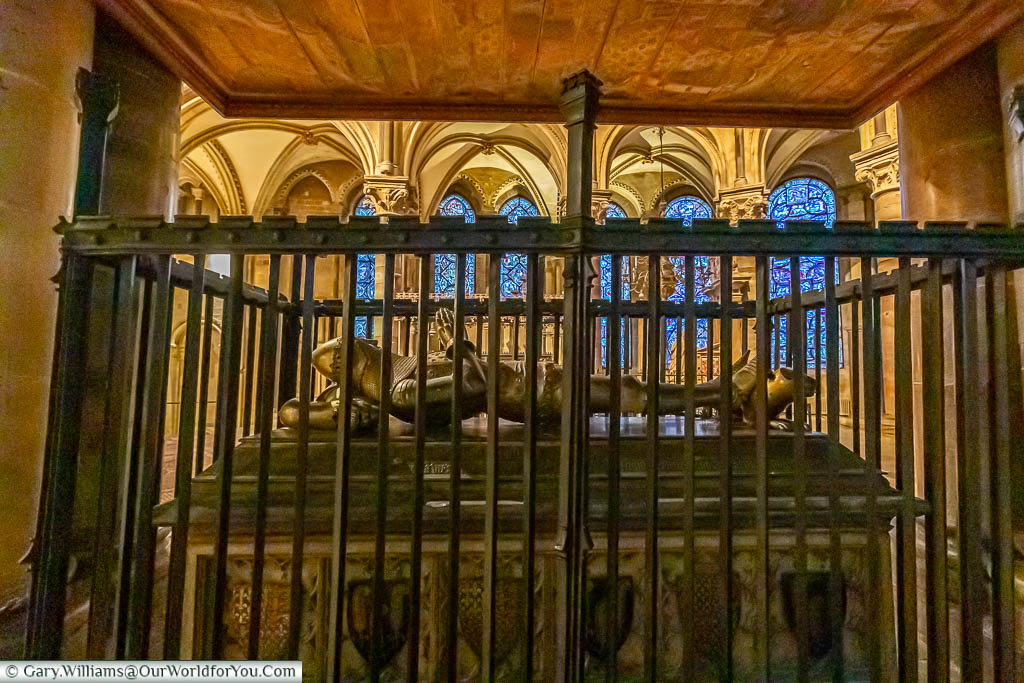
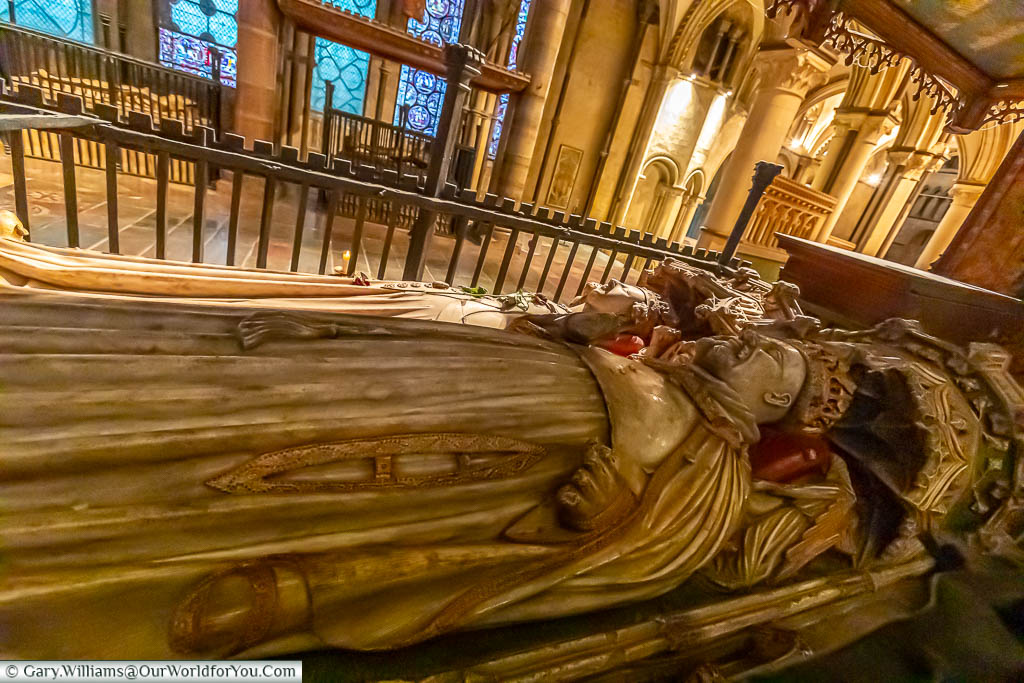
Canterbury Cathedral Quire
One of the captivating parts of Canterbury Cathedral is the beautiful Quire.
The Quire was rebuilt after it was severely damaged during a fire in September 1174. The crypt miraculously survived the fire. The rest of the major reconstruction was built in the new Gothic style with limestone imported from Normandy.
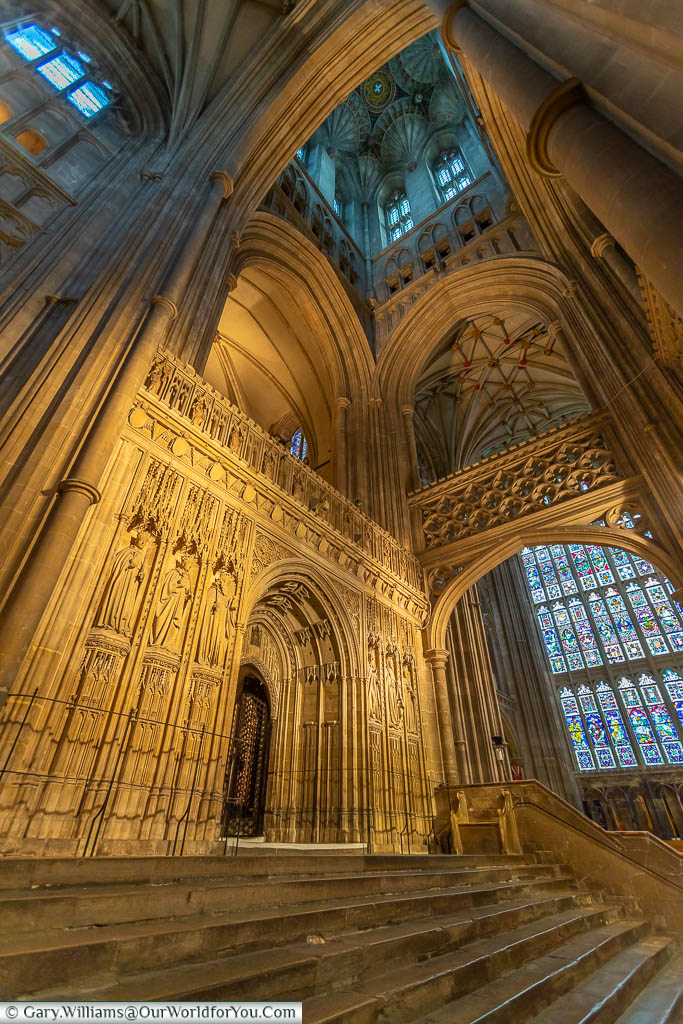
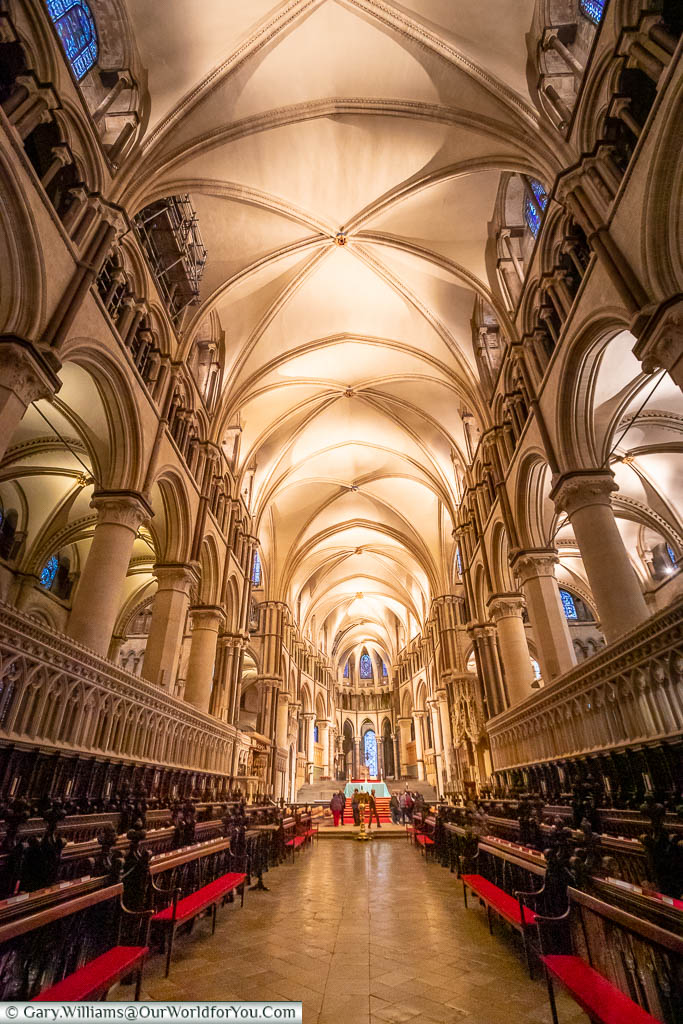
Map, guides and more
When you’re nurturing the seed of a road trip, plotting your destinations across a paper map just brings the adventure to life. Whether it’s the touchy-feely aspect of the map or the rustling sound of mastering the art of origami while trying to fold it away, I’m not too sure. Nonetheless, the good old Ordnance Survey guys and gals always come up trumps.
Take a look at the vast array of maps you can choose from.
The Great Cloisters
The cloister within Canterbury Cathedral is beautiful and so peaceful, you wouldn’t believe you are in the middle of a city centre.
The lush, manicured grass is encircled with intricate stone arches, all adorned with delicate stained-glass windows.
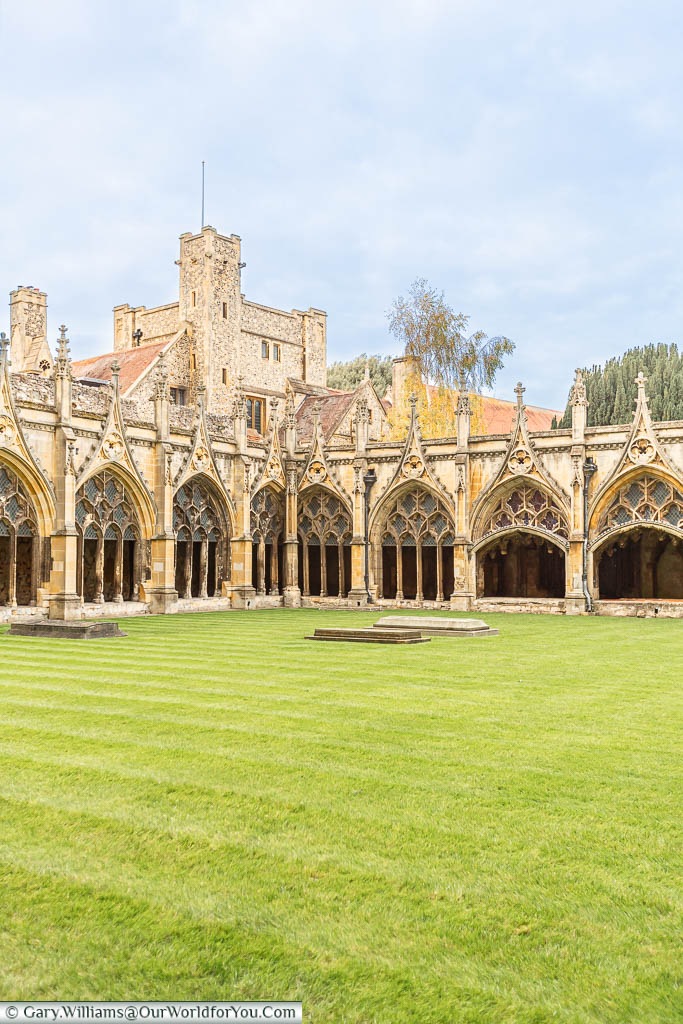
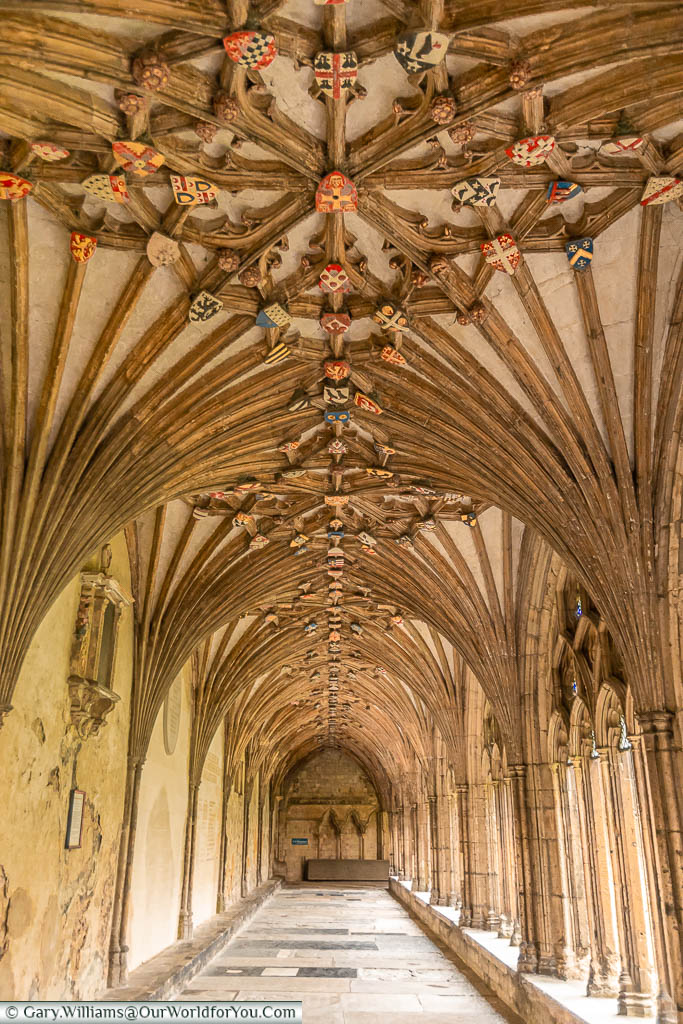
Kent rural road trip
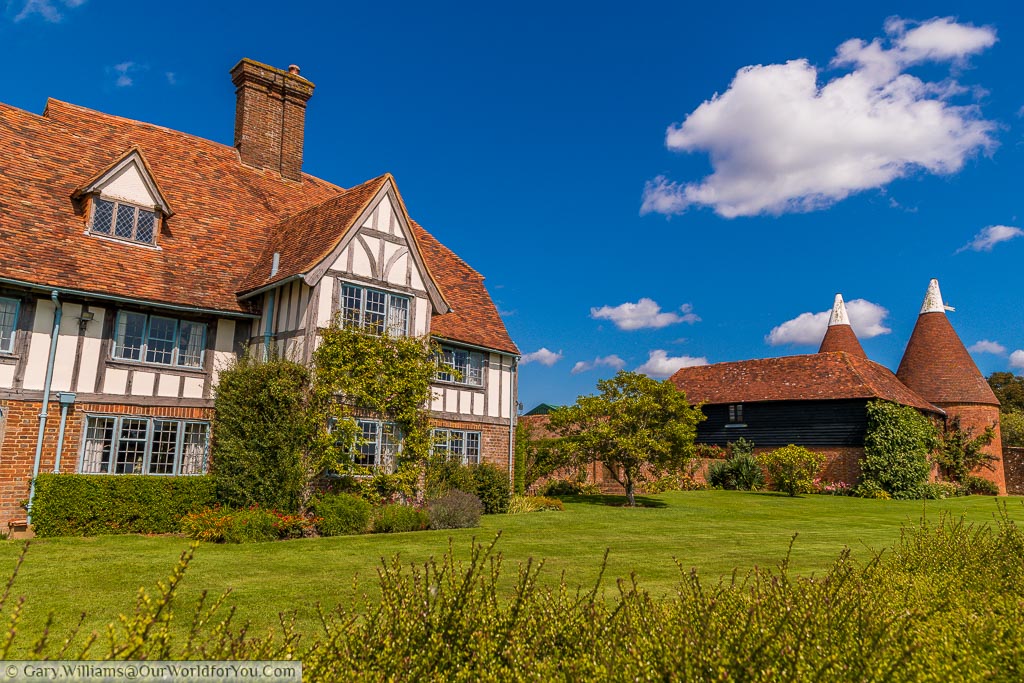
A road trip around the Kent countryside
Canterbury Cathedral remembers
The Huguenots and Warriors’ ChapelDuring the 17th century, 200,000 French-speaking Protestant Huguenots arrived in the UK fleeing persecution from Catholic France.
The Huguenots are still remembered today in Canterbury Cathedral. Their descendants’ worship, in French, every Sunday at 3pm at the Huguenot Chapel in the Cathedral’s Crypt.
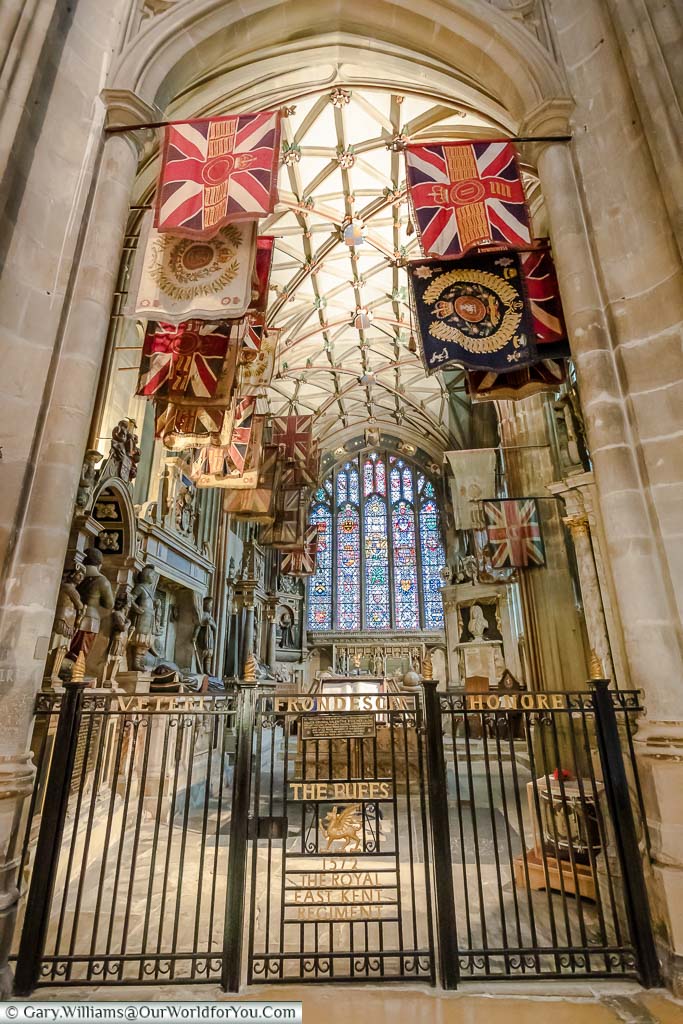
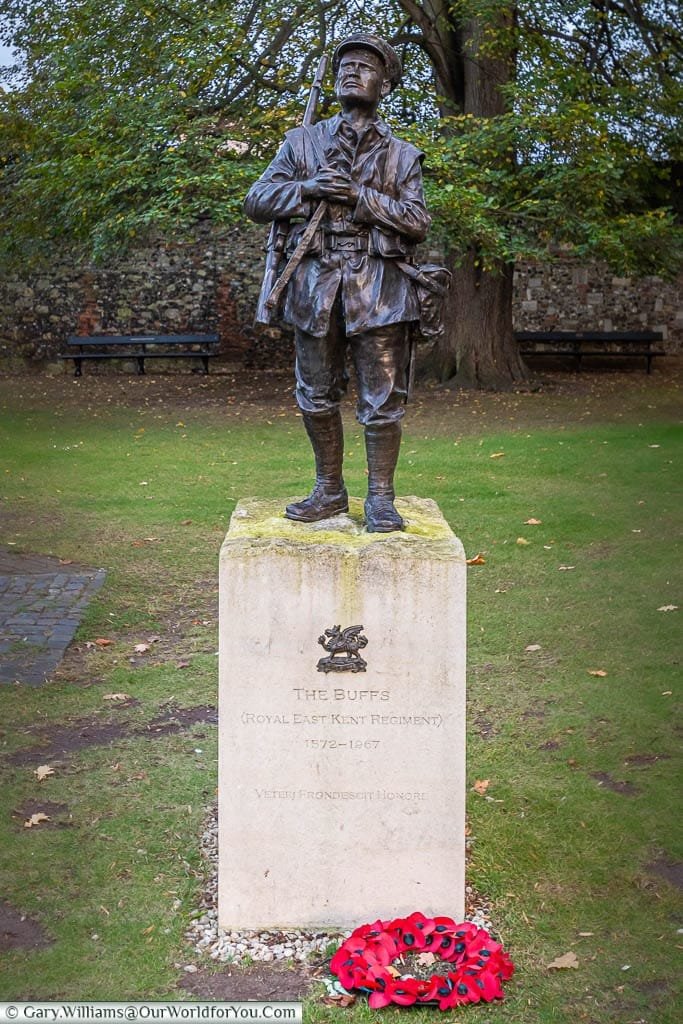
Nearby the French Church is the eye-catching Warriors’ Chapel, also known as the Buffs’ Chapel, lined with the historic old colours from the regiment’s past since 1848.
The Buffs (Royal East Kent Regiment) Chapel underwent lengthy restoration and once again welcomed worshippers back in April 2017.
The touching traditional daily bell ceremony again resumed.
The ceremony, which began in 1926, is a unique moment in the Cathedral’s day when the bell of the former HMS Canterbury is rung six times.
The Buffs (Royal East Kent Regiment) holds a special place for us too, as the War Memorial in our village of Eccles in Kent bears the names of 6 young lads who were killed in the First World War.
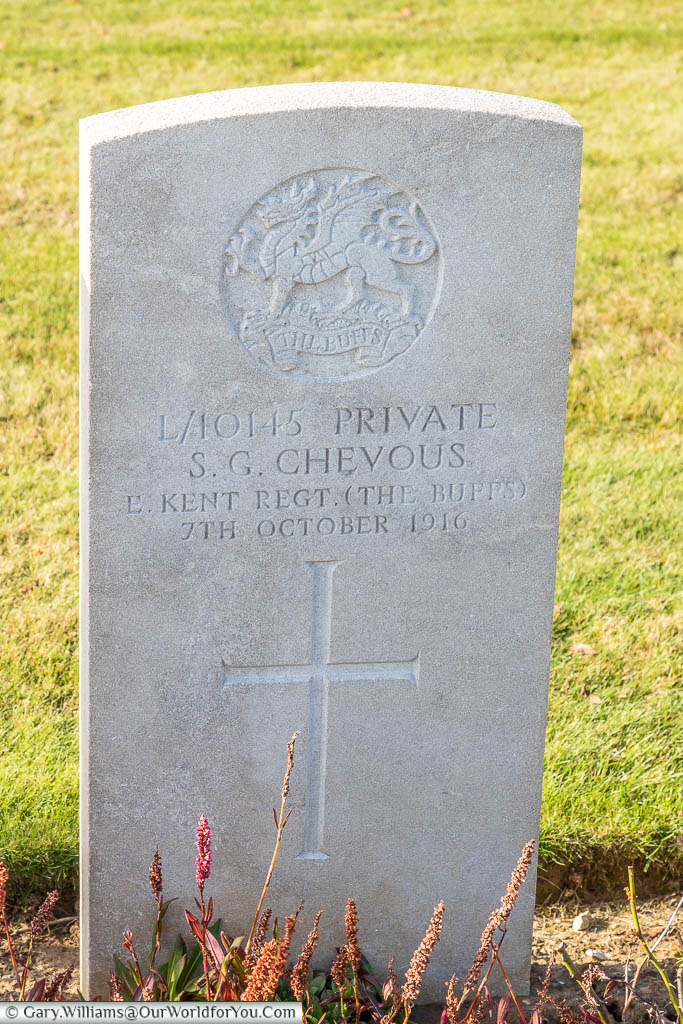
Tempted to go?
At present, you will need to reserve your timed ticket in advance. This allows you into Canterbury Cathedral and Precincts.
I’m going to have a little gripe here, and that’s to do with the entrance fee. I appreciate that a Cathedral of this status is expensive to run; however, I feel that it should be free for UK citizens. Many historic Cathedrals around the UK and the rest of the world do not charge.
Canterbury Cathedral Precinct
And the oldest school in the worldWhen visiting Canterbury Cathedral, you must allow time to stroll around the Precinct and through the grounds of King’s School.
Weave your way amongst the ancient buildings and the tranquil gardens. As you amble around the rear of the Cathedral, passing through stone arches and historic corridors, you find yourself in the grounds of King’s School.
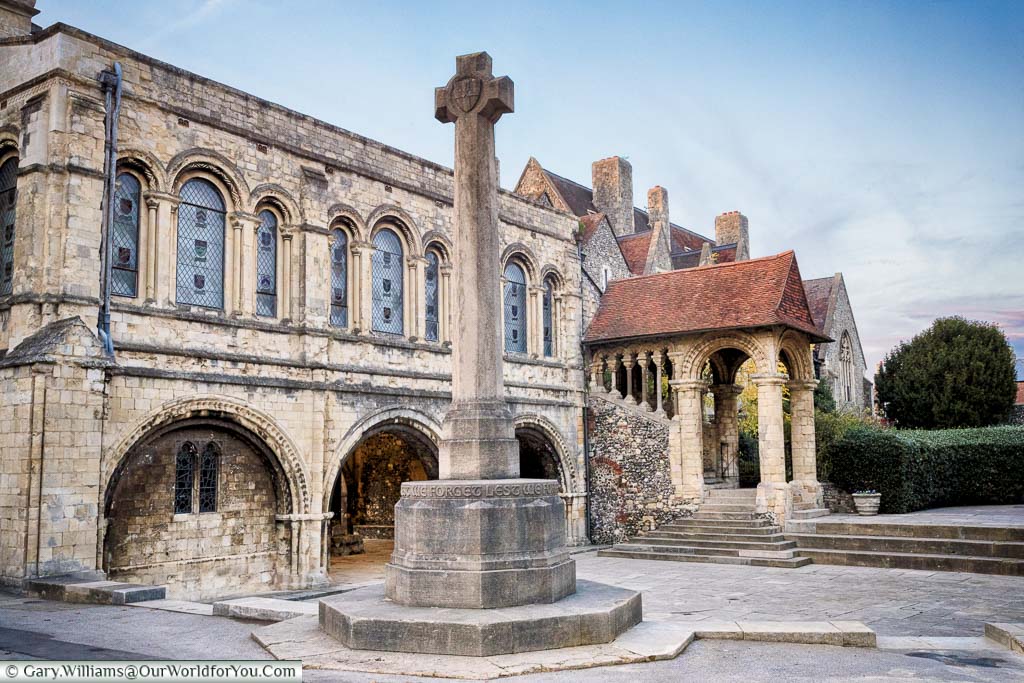
King’s School was founded in the same year as Canterbury Cathedral, 597AD and is the oldest continually operating school in the world.
You feel like you’ve wandered into a secret part of Canterbury. Within the school grounds are some charming old buildings, including a schoolhouse dating from 1860 and the Norman staircase dating from the 12th-century.
Why not?
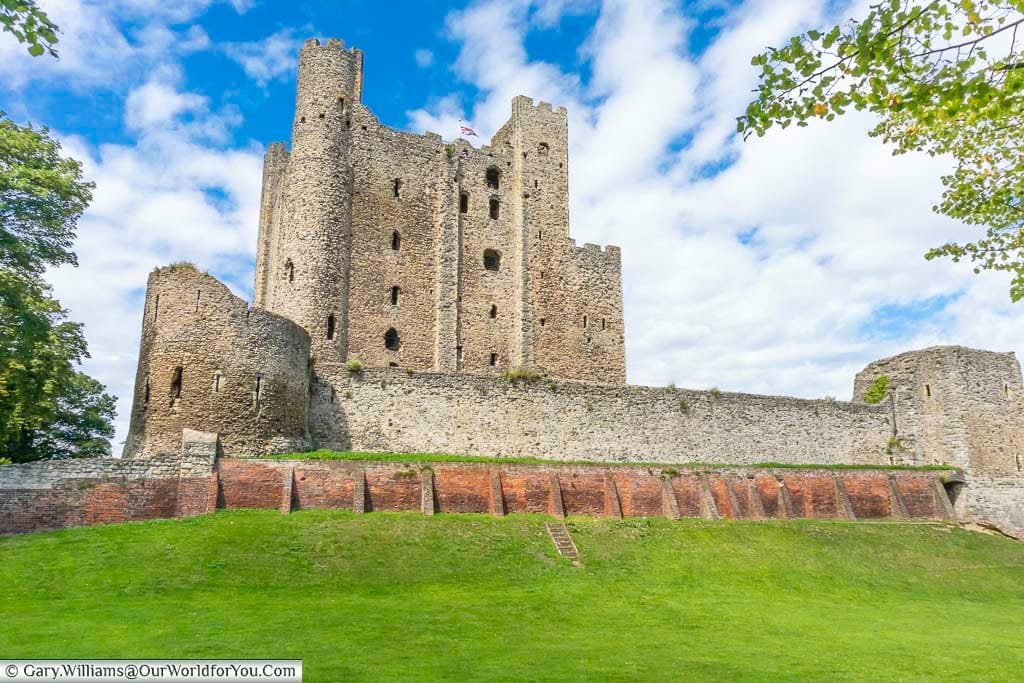
10 reasons to unearth Rochester, Kent, UK
* This post may contain links to affiliated sites where we earn a small commission at no additional charge to you.
